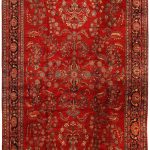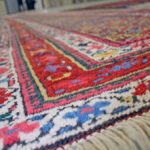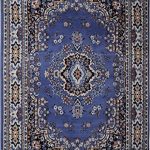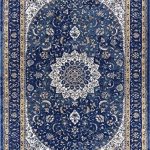Persian rugs are considered some of the most beautiful and intricate rugs in the world. Each design is carefully crafted and filled with symbolism and meaning that reflect the rich history and culture of Persia. From floral patterns to geometric shapes, each design tells a story and holds significance in Persian art and tradition.
One of the most common designs found in Persian rugs is the floral pattern. Flowers have long been a symbol of life, beauty, and eternity in Persian culture. Different types of flowers can carry various meanings, such as roses representing love and passion, or tulips symbolizing the arrival of spring and new beginnings. The intricate details of these floral patterns are often hand-woven with precision, showcasing the skill and craftsmanship of Persian rug makers.
Another popular design found in Persian rugs is the geometric pattern. Geometric shapes have been a part of Persian art and architecture for centuries, symbolizing order, structure, and balance. These patterns often feature intricate motifs such as stars, squares, diamonds, and hexagons, all carefully arranged in harmonious symmetry. Geometric designs are also believed to ward off evil spirits and protect the home, making them both aesthetically pleasing and functional.
Animal motifs are also commonly seen in Persian rug designs, with each animal carrying its own symbolic meaning. For example, birds are often depicted as symbols of freedom and spirituality, while lions represent strength and courage. These animal motifs can be found woven into the rug’s borders or as central figures, adding a sense of storytelling and mythology to the design.
In addition to floral, geometric, and animal motifs, Persian rugs can also feature medallion patterns, prayer motifs, and hunting scenes, each with its own significance and symbolism. Medallions are often seen as symbols of protection and unity, while prayer motifs symbolize devotion and spirituality. Hunting scenes depict tales of heroism and adventure, showcasing the rich history and cultural traditions of Persia.
Overall, Persian rug designs are not merely decorative elements but also carry deep symbolism and meaning that reflect the values and beliefs of Persian society. Whether it’s a floral pattern symbolizing life and beauty or a geometric design representing order and balance, each motif in a Persian rug tells a unique story and adds a touch of sophistication and charm to any space. So next time you admire a Persian rug, take a closer look at the intricate details and see if you can uncover the hidden symbolism and meaning behind its design.
 darbylanefurniture.com Interior design ideas with the latest interior inspiration
darbylanefurniture.com Interior design ideas with the latest interior inspiration




















